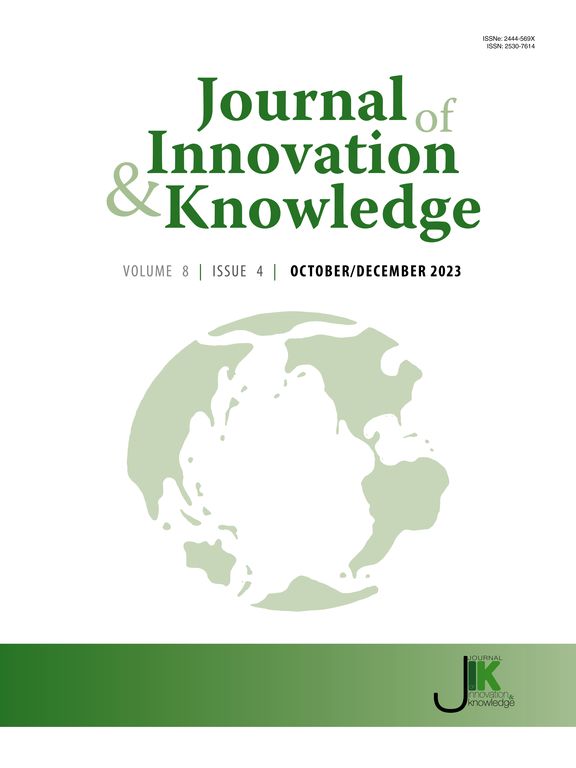Two decades of viral marketing landscape: Thematic evolution, knowledge structure and collaboration networks
IF 15.6
1区 管理学
Q1 BUSINESS
引用次数: 0
Abstract
This study offers a thorough examination of viral marketing research during the last two decades to uncover the changing nature of the field. Bibliometric analysis methods are used to analyze 791 peer-reviewed articles written by 1,820 authors and indexed in Scopus and Web of Science (WoS). The findings reveal how viral marketing research evolved over the past two decades, establish vital connections between authors, and uncover themes and trending topics. The study underscores the increasing practical importance of viral marketing by mirroring the substantial growth in research in the field, particularly from 2008 to 2014, with research topics such as Internet marketing, user-generated content, word-of-mouth, and e-word-of-mouth. From 2015 to 2020, viral marketing research exhibited a sustained growth phase, with the number of articles remaining relatively stable, covering topics such as viral marketing, social media, and social networks. In the most recent years, from 2021 to 2023, fluctuations occurred in the volume of articles driven by the focus on online marketing during the COVID-19 pandemic. While overall interest remains robust, these variations might signify a stabilization of the field with the entry of advanced topics such as influence maximization and popularity predictions. Overall, the diverse nature of viral marketing and evolving research landscape were notable across journals of a multidisciplinary nature; this suggests that viral marketing research is likely multidisciplinary, involving components of marketing, social network analysis, computational systems, complex system dynamics, data science, and engineering.
二十年的病毒式营销格局:主题演变、知识结构和协作网络
这项研究提供了一个彻底的检查病毒营销研究在过去的二十年,以揭示该领域不断变化的性质。采用文献计量分析方法对1820位作者撰写的791篇同行评议文章进行了分析,并在Scopus和Web of Science (WoS)中进行了检索。这些发现揭示了病毒式营销研究在过去二十年中的演变,建立了作者之间的重要联系,并揭示了主题和热门话题。该研究强调了病毒式营销日益增长的实际重要性,反映了该领域研究的大幅增长,特别是从2008年到2014年,研究主题包括网络营销、用户生成内容、口碑营销和电子口碑营销。从2015年到2020年,病毒营销研究呈现持续增长阶段,文章数量保持相对稳定,涵盖了病毒营销、社交媒体、社交网络等主题。最近几年,从2021年到2023年,由于COVID-19大流行期间对网络营销的关注,文章数量出现了波动。虽然总体兴趣仍然强劲,但随着影响力最大化和人气预测等高级主题的进入,这些变化可能意味着该领域的稳定。总的来说,病毒式营销的多样性和不断发展的研究格局在多学科性质的期刊中是显著的;这表明病毒式营销研究可能是多学科的,涉及市场营销、社会网络分析、计算系统、复杂系统动力学、数据科学和工程的组成部分。
本文章由计算机程序翻译,如有差异,请以英文原文为准。
求助全文
约1分钟内获得全文
求助全文
来源期刊

Journal of Innovation & Knowledge
Multiple-
CiteScore
16.10
自引率
12.70%
发文量
118
审稿时长
37 days
期刊介绍:
The Journal of Innovation and Knowledge (JIK) explores how innovation drives knowledge creation and vice versa, emphasizing that not all innovation leads to knowledge, but enduring innovation across diverse fields fosters theory and knowledge. JIK invites papers on innovations enhancing or generating knowledge, covering innovation processes, structures, outcomes, and behaviors at various levels. Articles in JIK examine knowledge-related changes promoting innovation for societal best practices.
JIK serves as a platform for high-quality studies undergoing double-blind peer review, ensuring global dissemination to scholars, practitioners, and policymakers who recognize innovation and knowledge as economic drivers. It publishes theoretical articles, empirical studies, case studies, reviews, and other content, addressing current trends and emerging topics in innovation and knowledge. The journal welcomes suggestions for special issues and encourages articles to showcase contextual differences and lessons for a broad audience.
In essence, JIK is an interdisciplinary journal dedicated to advancing theoretical and practical innovations and knowledge across multiple fields, including Economics, Business and Management, Engineering, Science, and Education.
 求助内容:
求助内容: 应助结果提醒方式:
应助结果提醒方式:


